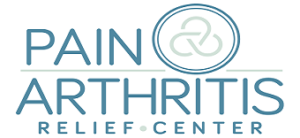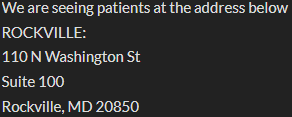
Dry Needling vs. Acupuncture
To the untrained eye, dry needling and acupuncture can easily be mistaken for the same thing. Both involve a similar process of puncturing the skin with thin needles for pain relief and therapeutic purposes, yet this is where the similarities end. With the recent changes in Medicare laws now allowing practitioners (a licensed acupuncturist that is an MD, PA-C, NP or supervised by one of these) to offer acupuncture that is covered by Medicare, it is important to know the difference between the two. The importance and stark contrast between the two seemingly mirrored concepts is an issue PARC aims to expose.
Both acupuncture and dry needling aim to achieve relief from chronic pain. Acupuncture is a centuries-old system that taps into the nervous system to release endorphins. It’s a traditional philosophy that focuses on aligning a person’s energy or ‘Qi’ allowing the body to heal itself. Needles are inserted at critical points on the body called meridians to stimulate the nerves, muscles, and tissues which in turn boosts the body’s natural painkillers. It is a system that is extensively regulated and requires three or more years of training to become fully qualified. As well as being able to physically apply the correct techniques of inserting the needles in the right places, practitioners also need to be able to identify specific symptoms and conditions.
Dry needling is a much more basic technique, using a process of releasing tension from knots and muscles. It is conducted by a practitioner inserting thin, stainless steel filiform needles into pressure points. The needles (as per the name) are dry and nothing is injected. They typically stay in the skin for a short period of time – from as little as 10 minutes to half an hour. As well as this main method, there are also two less common types of dry needling. The first of these is the “in and out technique” where the needle is inserted to a trigger point and removed right away, and the “non-trigger points technique” where a practitioner inserts needles to surrounding muscle rather than a pressure point or knot. Due to dry needling being a newer practice, there are no official guidelines and practitioners don’t require extensive training. There is no regulatory agency to control licensure or supervision for the procedure and the lack of this credentialing board means there is no way to determine the legitimacy of their practice.
While side effects within acupuncture are rare, this risk is raised in dry needling due to this lack of correct training. The chances of improper needle insertion are higher and in a worst-case scenario could lead to a pneumothorax. While unlikely, it’s still an important factor to consider when analyzing the two practices.
Research into the two procedures also varies greatly, with acupuncture having been extensively studied for hundreds of years and dry needling still being relatively new. Despite this lack of study into dry needling, it has faced critique doubting how much it actually helps. A 2017 study published in the Journal of Sport Rehabilitation concluded that stretching was just as effective in improving flexibility as dry needling. Another study in 2015 found dry needling to be adequate for relieving pain in the short and medium-term, but not for long term relief. With long-term chronic pain being one of the largest epidemics in the US at present, a short-term solution seems to be avoiding the point.
If you are in chronic pain, the introduction of acupuncture being covered by Medicare means there has never been a better time to try an alternative treatment. PARC only works with licensed acupuncture practitioners who have passed the extensive training required. In order to qualify for Medicare coverage, you need to have had chronic lower back pain for a minimum of 12 weeks and you will benefit from 12 acupuncture sessions within 90 days. If your pain has decreased, you are allowed an additional 8 sessions. Another qualification point for the cover stipulates that the acupuncture sessions must be performed by a healthcare provider with both a master’s or doctoral-level degree in acupuncture from an accredited school, and a current license to practice acupuncture in the state where care is being provided. The Pain Arthritis Relief Center fits all the criteria to be covered under Medicare. You can find out more information about the requirements for acupuncture and Medicare here.





